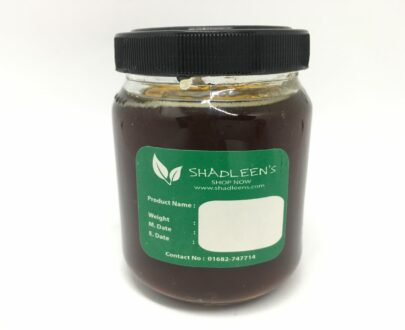- You have no items in your shopping cart
- Subtotal: ৳0.00
Title: Exploring the Wonders of Gluten-Free Oat Flour: Benefits, Nutrition, and Delicious Ways to Incorporate It Into Your Diet
Introduction :
In recent years, the popularity of gluten-free alternatives has surged, with individuals seeking healthier and more inclusive options for their dietary needs. Among these alternatives, gluten-free oat flour has emerged as a versatile and nutritious option that caters to a wide range of lifestyles. In this comprehensive guide, we’ll delve into the benefits and nutritional value of gluten-free oat flour, exploring its versatility in cooking and baking, and providing you with delicious ways to incorporate it into your diet.
The Benefits of Gluten Free Rolled Oats Flour :
Gluten-free oat flour, derived from ground oats, offers a plethora of benefits that make it a valuable addition to any diet. One of its primary advantages is its gluten-free nature, making it suitable for individuals with celiac disease or gluten sensitivities. Additionally, oat flour is rich in dietary fiber, which promotes digestive health, regulates blood sugar levels, and contributes to a feeling of fullness, aiding in weight management.
Moreover, gluten-free oat flour is a good source of vitamins and minerals, including manganese, phosphorus, magnesium, and zinc, which are essential for various bodily functions such as bone health, energy metabolism, and immune function. Oats are also known for their beta-glucan content, a type of soluble fiber that has been linked to numerous health benefits, including reduced cholesterol levels and improved heart health.
Nutritional Facts of Gluten Free Rolled Oats Flour :
Gluten-free oat flour is a nutritional powerhouse, packed with essential nutrients that support overall health and well-being. A quarter-cup serving (30 grams) of gluten-free oat flour typically contains:
– Calories: 110
– Protein: 4 grams
– Fat: 2 grams
– Carbohydrates: 20 grams
– Dietary Fiber: 2 grams
– Sugars: 0 grams
– Calcium: 2% of the Daily Value (DV)
– Iron: 10% of the DV
– Potassium: 2% of the DV
– Magnesium: 8% of the DV
Additionally, gluten-free oat flour is low in saturated fat and cholesterol-free, making it a heart-healthy choice for individuals looking to improve their cardiovascular health. Its moderate protein content also makes it a valuable addition to vegetarian and vegan diets, providing essential amino acids necessary for muscle repair and growth.
How to Incorporate Gluten-Free Oat Flour Into Your Diet :
There are countless ways to incorporate gluten-free oat flour into your diet, whether you’re baking up a storm in the kitchen or looking to boost the nutritional value of your meals. Here are some delicious and creative ways to enjoy the benefits of gluten-free oat flour:
1. Baking: Use gluten-free oat flour as a substitute for wheat flour in your favorite baking recipes, such as cookies, muffins, pancakes, and bread. Its mild, slightly sweet flavor pairs well with a variety of ingredients, adding moisture and texture to baked goods.
2. Thickening Agent: Use gluten-free oat flour as a thickening agent in soups, stews, sauces, and gravies. Simply whisk it into the liquid until smooth, and simmer until thickened to your desired consistency.
3. Coating: Use gluten-free oat flour as a coating for meats, fish, or vegetables before baking or frying. Its fine texture creates a crispy, golden exterior while adding a nutty flavor to your dishes.
4. Smoothies: Add a spoonful of gluten-free oat flour to your morning smoothie for an extra boost of fiber and nutrients. It blends seamlessly with fruits, vegetables, and other smoothie ingredients, creating a creamy and satisfying texture.
5. Porridge: Cook gluten-free oat flour with water or milk to make a hearty and nutritious porridge. Top it with your favorite fruits, nuts, seeds, and sweeteners for a delicious breakfast or snack option.
6. Energy Bars: Incorporate gluten-free oat flour into homemade energy bars or granola bars for a wholesome and filling snack. Combine it with nuts, seeds, dried fruits, and nut butter, then press into a pan and refrigerate until firm.
7. Breading: Use gluten-free oat flour as a breading for chicken tenders, fish fillets, or tofu before baking or frying. Its light, crispy texture adds a satisfying crunch to your favorite dishes.
Shadleen’s Herb Your Source for the Best Quality Rolled Oats Flour in Bangladesh
As a prominent promoter of healthy food and lifestyle choices in Bangladesh, Shadleen’s Herb takes pride in offering the finest homemade rolled oats flour in the country. In this article, we will explore what rolled oats are, the difference between rolled oats and processed oats, the benefits of consuming rolled oats, and who can enjoy this nutritious food. Additionally, we will address whether Dr. Gram rolled oats are gluten-free and if they are suitable for six-month-old babies. Lastly, we’ll clarify whether rolled oats and steel-cut oats are the same. Read on to discover why Shadleen’s Herb provides the best quality and best-priced rolled oats flour in Bangladesh.
Conclusion :
In conclusion, gluten-free oat flour is a versatile and nutritious ingredient that offers numerous health benefits and culinary possibilities. Whether you’re following a gluten-free diet or simply looking to add more variety to your meals, incorporating gluten-free oat flour into your cooking and baking repertoire is a simple and delicious way to boost the nutritional value of your dishes while satisfying your taste buds. So go ahead, explore the wonders of gluten-free oat flour and enjoy its many benefits in your favorite recipes! Whole Grain Rolled Oats, Shadleen’s Herb offers the best quality rolled oats flour at the best prices in Bangladesh. Our commitment to health and nutrition is reflected in our selection of rolled oats, which are packed with nutrients and provide numerous benefits. Whether you’re looking to maintain a healthy lifestyle, support heart health, or enjoy a wholesome breakfast, rolled oats are an excellent choice.
| Weight | N/A |
|---|---|
| weight |







Customer reviews
Reviews
There are no reviews yet.
Write a customer review